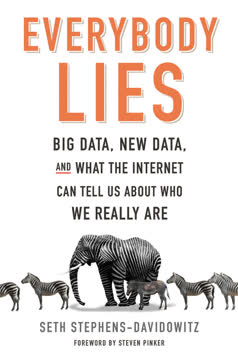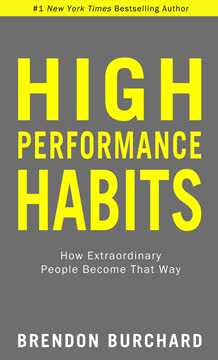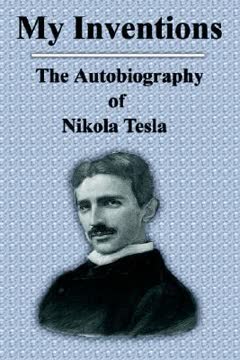가지 주요 요점
1. 자원을 쫓는 대신 가진 것을 최대한 활용하라
자원의 더 나은 사용 = 더 나은 결과
쫓는 사고방식을 거부하라. 많은 사람들과 조직은 더 많은 자원을 가지면 자동으로 더 나은 결과를 얻을 수 있다고 믿는다. 이러한 "쫓는" 사고방식은 끊임없는 불만족과 비효율성을 초래한다. 대신, 기존 자원을 최대한 활용하는 "늘리는" 사고방식을 채택하라.
자원 활용 능력을 받아들여라. 성공적인 개인과 기업은 종종 더 많은 것을 끊임없이 찾기보다는 이미 가지고 있는 것을 창의적으로 사용하여 번창한다. 예를 들어:
- 딕 영링이 더 큰 경쟁자들이 실패하는 동안 그의 맥주 제국을 성장시킨 사례
- 로버트 로드리게스가 저예산으로 비평가들의 찬사를 받은 영화를 만든 사례
- MLB 투수 다니엘 노리스가 밴에서 생활하며 가진 것에 감사하는 사례
부족한 것에 집중하는 대신, 가진 것을 최대한 활용하는 관점을 채택함으로써 성공과 만족을 위한 새로운 가능성을 열 수 있다.
2. 제약을 창의성과 혁신의 촉매제로 삼아라
제약이 창의성을 촉진할 수 있다.
제약은 창의성을 낳는다. 제약에 직면했을 때, 사람들은 종종 더 창의적이고 자원 활용 능력이 뛰어나게 된다. 이 역설적인 원칙은 예술가, 과학자, 기업가들에 의해 입증되었다.
제약을 통한 창의성의 예:
- 클로드 모네가 색상 팔레트를 제한하여 예술적 돌파구를 이룬 사례
- 닥터 수스가 50개의 고유한 단어만 사용하여 "초록 달걀과 햄"을 쓴 사례
- 연구자들이 부족한 사고방식이 더 새로운 문제 해결을 이끌어낸다는 것을 발견한 사례
제약을 장애물로 보기보다는 혁신의 촉매제로 보라. 시간, 예산, 자원의 제약을 다르게 생각하고 독특한 해결책을 찾을 기회로 받아들여라.
3. 심리적 소유감을 키워 숨겨진 잠재력을 발휘하라
사람들이 항상 나에게 가게를 소유하고 있는지 묻는다—항상.
소유감을 키워라. 사람들이 자신의 일에 강한 심리적 소유감을 느낄 때, 그들은 더 몰입하고 창의적이며 생산적이 된다. 이 원칙은 실제 법적 소유 여부와 상관없이 적용된다.
심리적 소유감을 키우는 방법:
- 직원들에게 자율성과 의사결정 권한을 부여하라
- 프로젝트와 결과에 개인적인 투자를 장려하라
- 혁신적인 사고와 문제 해결을 인정하고 보상하라
연구에 따르면 심리적 소유감은 직무 만족도와 재정적 성과를 높인다. 사람들이 자신의 일에 투자된 느낌을 받을 수 있는 환경을 조성함으로써, 조직은 숨겨진 잠재력을 발휘하고 더 나은 결과를 얻을 수 있다.
4. 다양한 경험을 통해 문제 해결 능력을 향상시켜라
내 아이디어는 그냥 떠오른다. 설명할 수 없다. 모두 직관적이다.
다중 맥락 규칙을 받아들여라. 다양한 경험, 즉 "다중 맥락" 지식을 키우는 것은 문제 해결 능력과 창의성을 향상시킨다. 이 접근법은 개인이 서로 관련이 없어 보이는 분야 간의 연결을 끌어내고 도전에 대한 새로운 해결책을 적용할 수 있게 한다.
다양한 경험의 이점:
- 여러 각도에서 문제를 접근할 수 있는 능력 향상
- 혁신적 사고 능력 증가
- 변화하는 환경에 대한 적응력 향상
다중 맥락 사고의 예:
- 스토리 머스그레이브: 농부에서 기계공, 우주비행사, 외과의사로 변신한 사례
- 레오나르도 다 빈치: 예술가, 발명가, 과학자, 엔지니어
새로운 경험을 적극적으로 찾아보고, 다양한 분야에 대해 배우며, 폭넓은 관심사를 키워 자원을 최대한 활용하고 복잡한 문제를 해결하는 능력을 강화하라.
5. 먼저 행동하고 나중에 계획하라: 즉흥의 힘
무엇을 해야 할지 몰라도, 그냥 시작해야 했다.
즉흥적인 행동을 받아들여라. 계획이 중요한 자리를 차지하지만, 과도한 계획은 마비와 기회를 놓치는 결과를 초래할 수 있다. 행동 지향적인 접근법을 채택하면 실시간 학습과 적응이 가능하다.
즉흥의 이점:
- 변화하는 상황에 대한 빠른 대응
- 예상치 못한 기회를 포착할 수 있는 능력 증가
- 직접적인 경험을 통한 학습 향상
성공적인 즉흥의 예:
- 로버트 로드리게스의 영화 제작 접근법: 본능에 따라 행동하고 즉석에서 적응
- 재즈 음악가들: 실시간으로 서로 반응하여 독특한 공연을 창출
즉흥적인 사고방식을 키우기 위해:
- 광범위한 계획 없이 프로젝트를 시작하라
- 실수를 학습 기회로 받아들여라
- 빠른 프로토타이핑과 반복을 연습하라
6. 긍정적인 기대를 설정하여 자기 충족 예언을 만들어라
사람들이 상황을 실제로 생각하면, 그들은 그것에 따라 행동하기 시작하고, 이는 미래를 변화시키는 실제 결과를 초래한다.
기대의 힘을 활용하라. 우리 자신과 다른 사람들에 대한 기대는 결과에 큰 영향을 미칠 수 있다. 이 현상은 피그말리온 효과로 알려져 있으며, 긍정적인 기대가 성과와 결과를 향상시킬 수 있음을 보여준다.
피그말리온 효과의 주요 측면:
- 교사의 기대가 학생 성과에 영향을 미친다
- 관리자의 기대가 직원 생산성을 형성한다
- 자기 기대가 개인 성취에 영향을 미친다
긍정적인 기대를 활용하기 위해:
- 자신과 다른 사람들에게 높지만 달성 가능한 기대를 의식적으로 설정하라
- 이러한 기대를 명확하고 지원적으로 전달하라
- 이러한 기대를 충족할 수 있도록 자원과 지원을 제공하라
긍정적인 기대의 환경을 조성함으로써, 개인과 조직은 숨겨진 잠재력을 발휘하고 더 나은 결과를 얻을 수 있다.
7. 예상치 못한 자원을 결합하여 획기적인 해결책을 찾아라
소유하고 유지하라.
예상치 못한 조합을 찾아라. 혁신은 종종 관련이 없어 보이는 자원이나 아이디어를 결합함으로써 발생한다. 기존의 조합을 넘어서서 생각함으로써, 개인과 조직은 독특한 해결책과 기회를 창출할 수 있다.
성공적인 예상치 못한 조합의 예:
- 로이 초이의 한국 BBQ 타코: 한국과 멕시코 요리의 융합
- 에어비앤비: 여분의 방과 단기 임대를 결합
- 플레이도우: 벽지 청소기를 어린이 장난감으로 재활용
혁신적인 조합을 촉진하기 위해:
- 학제 간 협력을 장려하라
- 서로 다른 아이디어를 연결하기 위해 유추적 사고를 연습하라
- 자원 제한과 사용에 대한 가정을 도전하라
예상치 못한 조합을 적극적으로 찾아봄으로써, 기존 자원에서 새로운 가치를 창출하고 획기적인 해결책을 만들어낼 수 있다.
8. 과도한 자원 활용의 함정을 피하라
무한한 상상력과 돈이 없는 창의적인 사람이 항상 무한한 수표책을 가진 재능 없는 거물보다 더 나은 영화를 만들 수 있다.
신중함을 유지하며 자원을 늘려라. 자원을 늘리는 것은 강력하지만, 과도한 자원 활용에서 발생할 수 있는 일반적인 함정을 피하는 것이 중요하다.
과도한 자원 활용의 잠재적 위험:
- 비효율적일 정도로 지나치게 절약하는 것
- 너무 많은 다양한 경험을 추구하여 집중력을 잃는 것
- 실수에서 배우지 않고 직관에만 의존하는 것
- 실망을 초래하는 비현실적인 기대 설정
효과적으로 자원을 늘리기 위해:
- 절약과 필요한 투자의 균형을 유지하라
- 핵심 강점을 보완하는 경험에 집중하라
- 직관과 의도적인 학습 및 반성을 결합하라
- 도전적이지만 달성 가능한 기대를 설정하라
이러한 잠재적 함정을 염두에 두고, 자원을 늘리는 힘을 활용하면서도 그 위험을 피하여 지속 가능한 성공과 만족을 이룰 수 있다.
마지막 업데이트 날짜:
FAQ
What's Stretch: Unlock the Power of Less - and Achieve More Than You Ever Imagined about?
- Core Concept of Stretching: The book focuses on "stretching," which is about maximizing existing resources rather than acquiring more. This approach can lead to greater success and satisfaction.
- Chasing vs. Stretching: Author Scott Sonenshein contrasts a "chasing" mindset, which seeks more resources, with a "stretching" mindset that leverages what is already available.
- Real-Life Examples: The book includes stories like Dick Yuengling's brewery success to illustrate how limited resources can lead to extraordinary outcomes.
Why should I read Stretch by Scott Sonenshein?
- Practical Advice: The book offers actionable insights for cultivating a stretching mindset in personal and professional contexts, helping readers use their resources more effectively.
- Timely Relevance: In a world focused on acquiring more, this book provides a refreshing perspective on resourcefulness and satisfaction.
- Empowering Mindset Shift: It empowers readers to see opportunities in constraints, fostering creativity and resilience for improved performance and happiness.
What are the key takeaways of Stretch?
- Embrace Resourcefulness: Success often comes from how we use what we have rather than what we lack, leading to innovative solutions and personal growth.
- Shift from Chasing to Stretching: Moving away from a chasing mentality can enhance satisfaction and prevent burnout, while a stretching mindset fosters fulfillment.
- Expectations Matter: Beliefs and expectations significantly influence performance and outcomes, with high expectations leading to better results.
What are the best quotes from Stretch and what do they mean?
- “Having More Resources = Getting Better Results”: This quote challenges the misconception that more resources directly lead to better outcomes, emphasizing effective use of existing resources.
- “Better Use of Resources = Getting Better Results”: Highlights the core principle of stretching, encouraging readers to rethink their approach to resource management.
- “You have to act first before inspiration will hit”: Illustrates the importance of taking action rather than waiting for the perfect moment, reinforcing progress through doing.
What is the difference between a chasing mindset and a stretching mindset in Stretch?
- Chasing Mindset Defined: Focuses on acquiring more resources, often leading to dissatisfaction and burnout, creating a cycle of wanting more.
- Stretching Mindset Defined: Encourages maximizing the potential of existing resources, fostering creativity, innovation, and fulfillment.
- Impact on Performance: Those with a stretching mindset often achieve better results by leveraging available resources for unique solutions.
How can I apply the principles of Stretch in my daily life?
- Identify Existing Resources: Take stock of your skills, time, and connections, and think creatively about how to use them for new opportunities.
- Set High Expectations: Cultivate a belief in your potential and set high expectations to inspire yourself and others to achieve more.
- Embrace Constraints: View limitations as opportunities to innovate, sparking creativity and leading to unexpected solutions.
How does Stretch address the concept of psychological ownership?
- Definition of Psychological Ownership: Describes the feeling of possessiveness over resources, empowering individuals to take initiative and be resourceful.
- Impact on Performance: A sense of ownership leads to more effort and creativity, resulting in better outcomes and job satisfaction.
- Cultivating Ownership: Foster an environment that encourages psychological ownership by allowing decision-making and risk-taking.
What role do expectations play in achieving success according to Stretch?
- Expectations as Self-Fulfilling Prophecies: Expectations significantly influence outcomes, with high expectations leading to improved performance.
- Positive Prophecies: Creating positive expectations motivates individuals to strive for success, applicable in personal and professional contexts.
- Influence of Others’ Expectations: Expectations from authority figures shape beliefs about capabilities, highlighting the importance of a supportive environment.
How does Stretch suggest overcoming complacency in successful individuals or organizations?
- Recognizing Change: Stay aware of environmental changes to prevent stagnation, continuously adapting to evolving circumstances.
- Encouraging Innovation: Foster a culture of innovation by encouraging experimentation and risk-taking to stimulate growth and creativity.
- Setting New Goals: Regularly set challenging goals to push beyond comfort zones, reigniting motivation and driving progress.
What exercises does Stretch suggest to strengthen a stretching mindset?
- Resource Inventory Exercise: List current resources and brainstorm ways to utilize them more effectively, identifying untapped potential.
- Expectation Setting: Set high expectations for yourself and others, reflecting on past successes and envisioning future achievements.
- Constraint Embracement: Take on challenges with limited resources to practice stretching, setting goals that require creative problem-solving.
How does Stretch suggest overcoming the injuries from overstretching?
- Avoiding Cheapskate Mentality: Warns against excessive frugality that harms quality and morale, advocating for balanced resource management.
- Navigating Trade-Offs: Provides strategies for recognizing and bridging trade-offs, finding synergies between competing demands.
- Learning from Mistakes: Emphasizes learning from failures, encouraging a growth mindset that views challenges as opportunities for improvement.
What are some examples of stretching in action from Stretch?
- Dick Yuengling’s Brewery: Transformed his family brewery by maximizing existing resources, leading to significant growth and success.
- Robert Rodriguez’s Filmmaking: Used limited resources creatively to produce El Mariachi, launching a successful Hollywood career.
- Jenny Dawson’s Chutney Business: Created value from overlooked resources by turning discarded produce into gourmet chutneys, addressing food waste and empowering individuals.
리뷰
Stretch는 평균 평점 5점 만점에 3.66점을 받으며 다양한 평가를 받고 있다. 많은 독자들은 이 책이 전하는 자원 활용과 가진 것을 최대한 활용하라는 메시지를 고무적이고 실용적이라고 평가한다. 저자의 글쓰기 스타일과 예시 사용도 대체로 긍정적인 반응을 얻고 있다. 그러나 일부 비평가들은 내용이 반복적이고 지나치게 장황하며 깊이가 부족하다고 지적한다. 몇몇 리뷰어들은 책의 핵심 아이디어를 더 간결하게 요약할 수 있을 것이라고 언급한다. 이러한 비판에도 불구하고, 많은 독자들은 창의성, 문제 해결, 개인 성장에 대한 책의 관점에서 가치를 찾고 있다.
Similar Books














